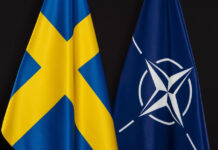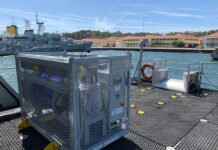The Portuguese Military Programming Law 2023–2034 – approved in July 2023 – seeks to provide a comprehensive boost to the modernisation of the country’s depleted armed forces by acquiring new equipment worth EUR 5.57 billion. This amount, the largest ever, foresees the acquisition of land, naval, air, cyber security, space capabilities, as well as emerging disruptive technologies, according to the Ministry of National Defence.
The Portuguese authorities are spending significant amounts out to 2034 in order to maintain and modernise in-service equipment, and procure a wide range of equipment, including armoured vehicles, vessels, aircraft, missiles, torpedoes, ammunition and drones. At the same time, Portugal is seeking to bolster research, development, and innovation in cooperation with local industry partners and with public and private research organisations to contribute to developing the local defence technological and industrial base (DTIB).
The Portuguese defence economy has a myriad of defence-related small and medium enterprises, clusters, trading companies and research centres, with activity in a variety of areas. Over the past decade, Portugal has primarily resorted to the NATO Supply and Procurement Agency (NSPA), to meet its needs for more immediate capabilities. Despite budget limitations and procurement delays, the country aims to reach 2% of GDP in defence expenditure by 2030 from the current 1.38%.
However, there are challenges – notably the country’s armed forces though are facing a staffing shortage, with 23,400 personnel currently employed, far below the authorised figure of 32,181. Several incentives and a relaxing of rules are being used to attract new personnel; however, they have yet to prove successful. Despite their small size, the Portuguese Armed Forces have been involved in several deployments as part of UN, EU, and NATO missions. Portugal currently deploys 579 troops aboard, the Cabinet of the Armed Forces Chief of Staff told ESD, including in the Central African Republic, Jordan, Mali, Mozambique, Romania, and Somalia.
Air Force’s Director of the Engineering and Programs Directorate, Brigadier General João Rui Ramos Nogueira told ESD that under its transformation plan ‘Air Force 5.3’, the Portugeuse Air Force (FAP) is looking to acquire a long-range medium-altitude long-endurance (MALE) unmanned aerial vehicle (UAV) fleet for the intelligence, surveillance, and reconnaissance (ISR) role, a lightweight attack aircraft fleet for the close air support (CAS) and ISR roles, three new UH-60 Black Hawk helicopters, as well as a 5th-generation fighter jet fleet to replace its F-16AM/BM Fighting Falcon aircraft. The creation of a Space Command and Control (C2) Centre is also planned.
In recent years, the Air Force ordered six UH-60A Black Hawk and seven AW119 MkII Koala helicopters, twelve OGS 42N/VN UAVs, Sidewinder AIM-9X Block II missiles, as well as the modernisation of four C-130H Hercules airlifters and five P-3C CUP+ Orion maritime patrol aircraft. In October 2023, Portugal received the first of five KC-390 Millennium transport aircraft it ordered in 2019.
In the recent past, the Navy received two Viana do Castelo class offshore patrol vessels (OPVs), and on 29 December 2023, awarded West Sea a contract to build six further vessels of the class by 2030. On 24 November 2023, the Navy awarded Damen a contract to build and outfit the NRP D. João II multi-purpose vessel. The Navy has also recently modernised is Super Lynx Mk95A helicopters. Regarding further acquisitions, Portugal is also looking to acquire two replenishment ships, a multi-role logistics ship, and coastal patrol ships. Additionally, the Navy’s Chief of Staff, Admiral Henrique Eduardo Passaláqua de Gouveia e Melo, will propose the purchase of two submarines to the new government.
In terms of frigates, Portugal operates two Bartolomeu Dias class, which were recently upgraded, and three Vasco da Gama class MEKO 200PN frigates, two of which will be modernised by 2027, and one will receive several platform control and communications updates, the Navy told ESD. All five frigates are intended to remain in service until 2035, and the current Military Programming Law also provides funds for their replacement, which is expected to enter service within this timeframe.
The Chief of the Army’s Capability Development Office, Lt. Col Emanuel Alves de Sousa told ESD that the Army is acquiring all-terrain vehicles, lightweight armoured vehicles, 120 mm mortar carriers, a Role 2B field hospital, armoured recovery vehicles, bridging systems, 155 mm howitzers, a very short-range air defence (VSHORAD) system, air defence radars, equipment for the SIC-T tactical communications system, ground surveillance radars, anti-tank guided missiles (ATGMs), 47 4×4 and 61 6×6 unarmoured/armoured logistics trucks, unmanned ground vehicles (UGVs) and UAVs. Additionally, the force will modernise its Leopard 2A6 tanks and Pandur II armoured vehicles.
Other equipment received by the Army in recent years includes: 4×4 VAMTAC ST5 armoured vehicles, 4×4 Q-150D airborne vehicles, grenade machine guns (GMG), the Minimi Mk3 light machine gun, HK416A5, Supernova TSS, SCAR-H/L and G17 Gen5 weapons, the SICCA3 integrated air defence C2 system, equipment for the ISTAR Battalion and the SIC-T system, Sportsman MV850, MTZR 2, MRZR D2 and MRZR D4 all-terrain vehicles, PRC-525, TWH-104R4 and Soveron HR5000 communication systems, NYXUS Bird LR imagers, Volvo FMX 380/420/540 and TGX 18.420 logistics trucks.
Victor M.S. Barreira









